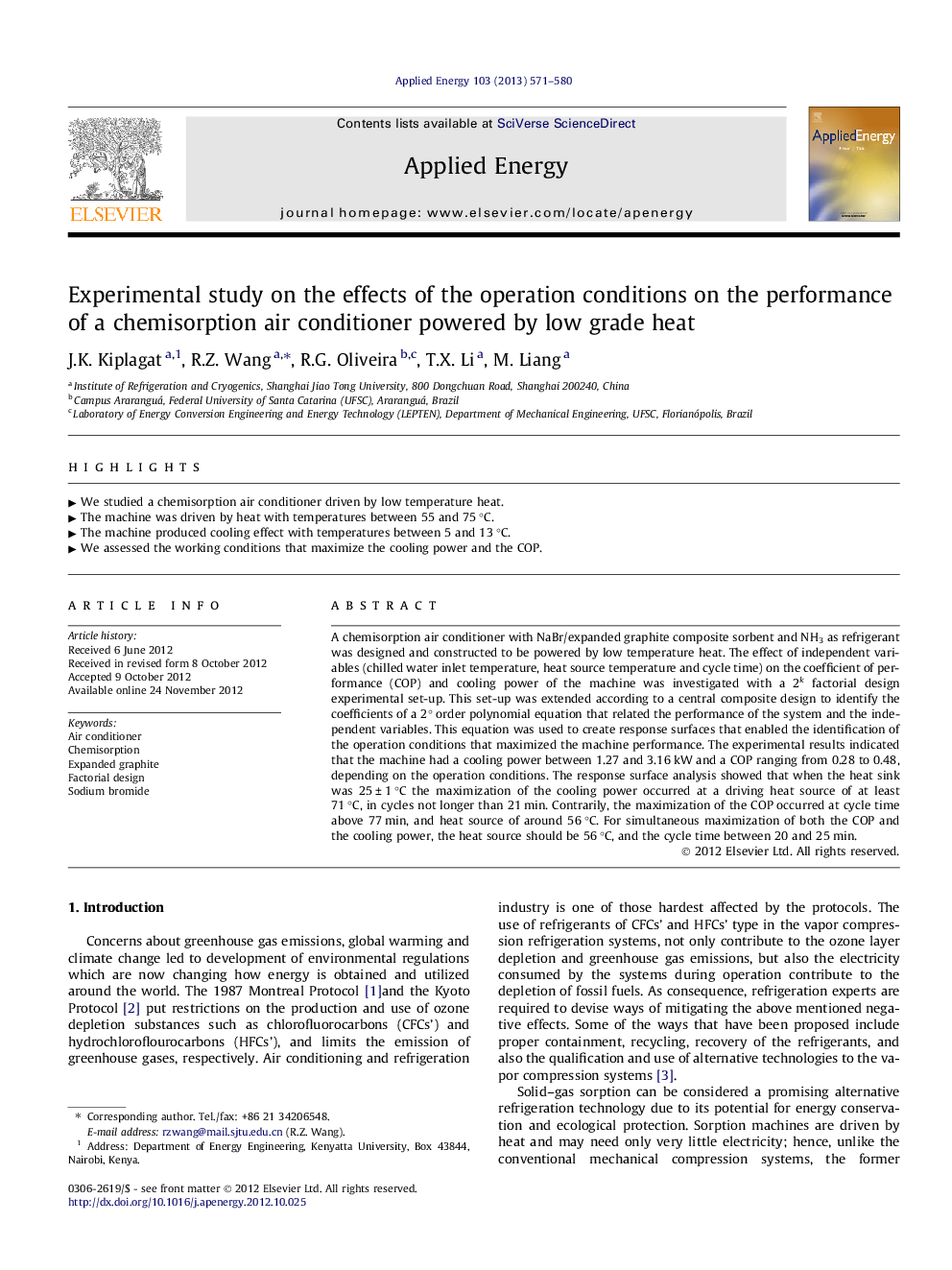| کد مقاله | کد نشریه | سال انتشار | مقاله انگلیسی | نسخه تمام متن |
|---|---|---|---|---|
| 243028 | 501915 | 2013 | 10 صفحه PDF | دانلود رایگان |

A chemisorption air conditioner with NaBr/expanded graphite composite sorbent and NH3 as refrigerant was designed and constructed to be powered by low temperature heat. The effect of independent variables (chilled water inlet temperature, heat source temperature and cycle time) on the coefficient of performance (COP) and cooling power of the machine was investigated with a 2k factorial design experimental set-up. This set-up was extended according to a central composite design to identify the coefficients of a 2° order polynomial equation that related the performance of the system and the independent variables. This equation was used to create response surfaces that enabled the identification of the operation conditions that maximized the machine performance. The experimental results indicated that the machine had a cooling power between 1.27 and 3.16 kW and a COP ranging from 0.28 to 0.48, depending on the operation conditions. The response surface analysis showed that when the heat sink was 25 ± 1 °C the maximization of the cooling power occurred at a driving heat source of at least 71 °C, in cycles not longer than 21 min. Contrarily, the maximization of the COP occurred at cycle time above 77 min, and heat source of around 56 °C. For simultaneous maximization of both the COP and the cooling power, the heat source should be 56 °C, and the cycle time between 20 and 25 min.
► We studied a chemisorption air conditioner driven by low temperature heat.
► The machine was driven by heat with temperatures between 55 and 75 °C.
► The machine produced cooling effect with temperatures between 5 and 13 °C.
► We assessed the working conditions that maximize the cooling power and the COP.
Journal: Applied Energy - Volume 103, March 2013, Pages 571–580